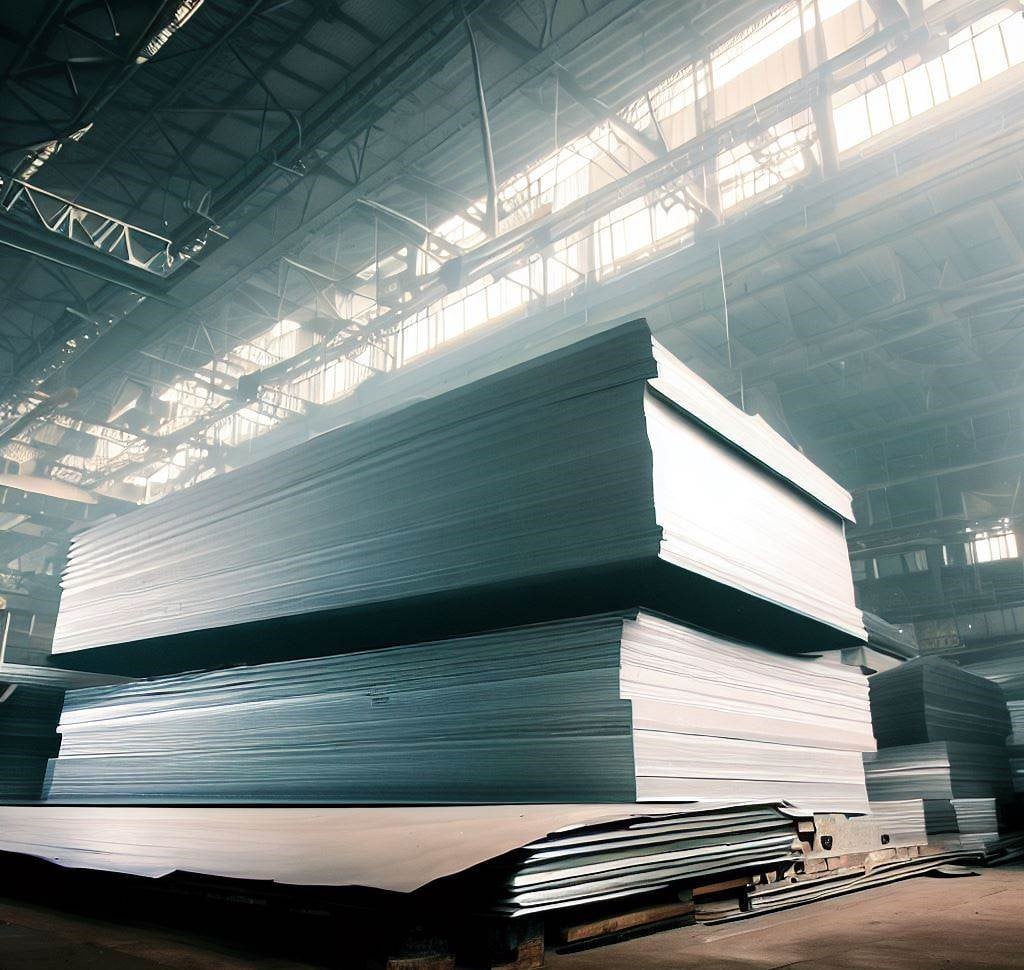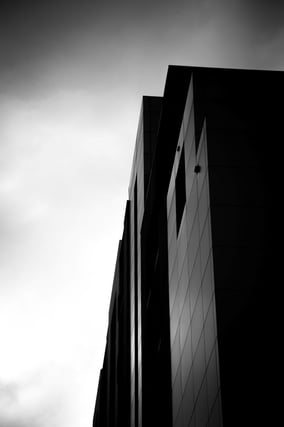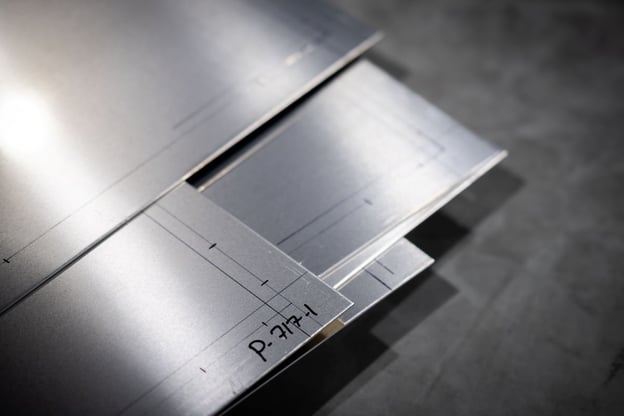In the world of architectural design, every detail matters. From the layout of a building to the materials used, every decision plays a pivotal role in the final outcome. Among these crucial decisions, the choice of materials for architectural panels stands out as a vital component that can define the aesthetics, durability, and overall quality of a structure. Hurtubise Facades, a renowned player in the industry, has consistently chosen the 5052-H32 alloy for manufacturing architectural aluminum panels. This decision is rooted in a thorough analysis of the alloy's mechanical properties, which has shown that it outperforms other options like the 5005-H14 alloy in several aspects.
The 5052-H32 Alloy: A Brief Overview
Before delving into the specifics of why Hurtubise Facades favors the 5052-H32 alloy, it's essential to understand the alloy itself. The 5052-H32 alloy is a type of aluminum-magnesium alloy known for its excellent combination of strength, corrosion resistance, and formability. It belongs to the 5xxx series of aluminum alloys, which are highly regarded for their versatility and suitability for various applications.
Strength and Durability
One of the key reasons why Hurtubise Facades chooses the 5052-H32 alloy for its architectural aluminum panels is its remarkable strength. The 5052-H32 alloy exhibits superior resistance to plastic deformation and elastic deformation, making it an ideal choice for structural applications. This inherent strength ensures that architectural panels made from this alloy can withstand various external forces, including wind, weather, and even potential impacts.
Comparing the 5052-H32 alloy to the 5005-H14 alloy, it's evident that the former surpasses the latter in terms of strength. According to material property data, the tensile strength of 5052-H32 is approximately 228 MPa, while that of 5005-H14 is only 175 MPa. This distinction becomes particularly significant when considering the long-term durability of architectural panels, which are exposed to the elements year-round1.
Corrosion Resistance
Corrosion resistance is another critical factor in the selection of materials for architectural applications, especially when dealing with exterior panels. Aluminum inherently possesses corrosion resistance due to its ability to form a protective oxide layer on its surface. However, the specific alloy composition can enhance or diminish this property.
The 5052-H32 alloy is known for its exceptional corrosion resistance, particularly in marine environments where exposure to saltwater is a concern. This corrosion resistance ensures that architectural panels remain aesthetically pleasing and structurally sound even in coastal or high-humidity regions. In comparison, the 5005-H14 alloy, while still corrosion-resistant, may not offer the same level of protection in such demanding conditions1.
Formability and Design Flexibility
Architectural design often demands materials that can be easily shaped and formed to achieve intricate and innovative designs. The 5052-H32 alloy excels in this regard. Its excellent formability and malleability allow for the creation of complex shapes and designs without compromising its structural integrity.
Hurtubise Facades values the design flexibility that the 5052-H32 alloy offers. Whether it's crafting unique façades, intricate patterns, or geometrically complex panels, this alloy allows architects and designers to push the boundaries of creativity. In contrast, the 5005-H14 alloy may have limitations in achieving such intricate designs due to its lower formability.
Sustainability and Recyclability
In today's architectural landscape, sustainability is a key consideration. Architects, builders, and manufacturers are increasingly seeking environmentally friendly materials and processes. Aluminum, as a material, is inherently sustainable due to its recyclability. The 5052-H32 alloy aligns perfectly with this sustainability ethos.
This alloy's recyclability makes it an eco-conscious choice for architectural applications. It can be recycled repeatedly without compromising its quality, reducing the environmental impact of construction projects. Choosing the 5052-H32 alloy demonstrates Hurtubise Facades' commitment to environmentally responsible practices1.
Comparing 5052-H32 with Other 5xxx Series Alloys
While the 5052-H32 alloy clearly offers a winning combination of properties for architectural aluminum panels, it's instructive to compare it with other alloys from the 5xxx series. The following table provides a broader perspective by including additional alloys:
Table 1: Comparative Properties of 5xxx Series Aluminum Alloys
| Property | 5052-H32 Alloy | 5005-H14 Alloy | 5083-H32 Alloy | 5754-H22 Alloy | 5182-H19 Alloy |
|---|---|---|---|---|---|
| Tensile Strength (MPa) | 228 | 175 | 317 | 220 | 310 |
| Yield Strength (MPa) | 193 | 130 | 228 | 180 | 205 |
| Elongation (%) | 12% | 5% | 12% | 15% | 5% |
| Modulus of Elasticity (GPa) | 69.0 | 69.0 | 70.3 | 70.0 | 69.0 |
| Corrosion Resistance | Excellent | Good | Excellent | Excellent | Good |
| Formability | Excellent | Good | Good | Excellent | Good |
| Design Flexibility | High | Moderate | High | High | Moderate |
| Sustainability | Highly Recyclable | Highly Recyclable | Highly Recyclable | Highly Recyclable | Highly Recyclable |
From this comparison, it's clear that while 5052-H32 excels in many aspects, other alloys like 5083-H32 and 5754-H22 offer their unique advantages. 5083-H32, for instance, boasts even higher tensile and yield strengths, making it suitable for more demanding structural applications. 5754-H22, on the other hand, offers good formability and corrosion resistance, making it another viable option for architectural use. 5182-H19, while having slightly lower strength, still provides good formability and may be chosen for certain design requirements1.
Conclusion
Hurtubise Facades' preference for the 5052-H32 alloy for manufacturing architectural aluminum panels is firmly rooted in its exceptional mechanical properties and suitability for architectural applications. This aluminum-magnesium alloy offers superior strength, durability, corrosion resistance, formability, and sustainability, making it the ideal choice for designing and constructing high-quality, long-lasting building exteriors.
The 5052-H32 alloy not only meets but exceeds the demands of modern architecture. Its ability to withstand external forces, maintain its appearance over time, and offer endless design possibilities sets it apart from alternative alloys like the 5005-H14. For architects, builders, and designers aiming to create iconic and enduring structures, Hurtubise Facades' commitment to using the 5052-H32 alloy is a testament to their dedication to excellence and innovation in architectural design.
While the 5052-H32 alloy stands as a strong contender among 5xxx series alloys, architects, builders, and manufacturers should carefully evaluate their project's specific requirements and objectives when choosing the most suitable aluminum alloy for their architectural panel applications. Each alloy offers its unique set of properties and advantages, allowing for flexibility in design and performance that can be tailored to meet the needs of various architectural projects1.
In the ever-evolving world of architectural design, where sustainability, aesthetics, and performance converge, the choice of materials like the 5052-H32 alloy plays a pivotal role in shaping the buildings of tomorrow. Hurtubise Facades' dedication to excellence and innovation serves as a beacon for architects and designers striving to create structures that stand the test of time and inspire generations to come.




